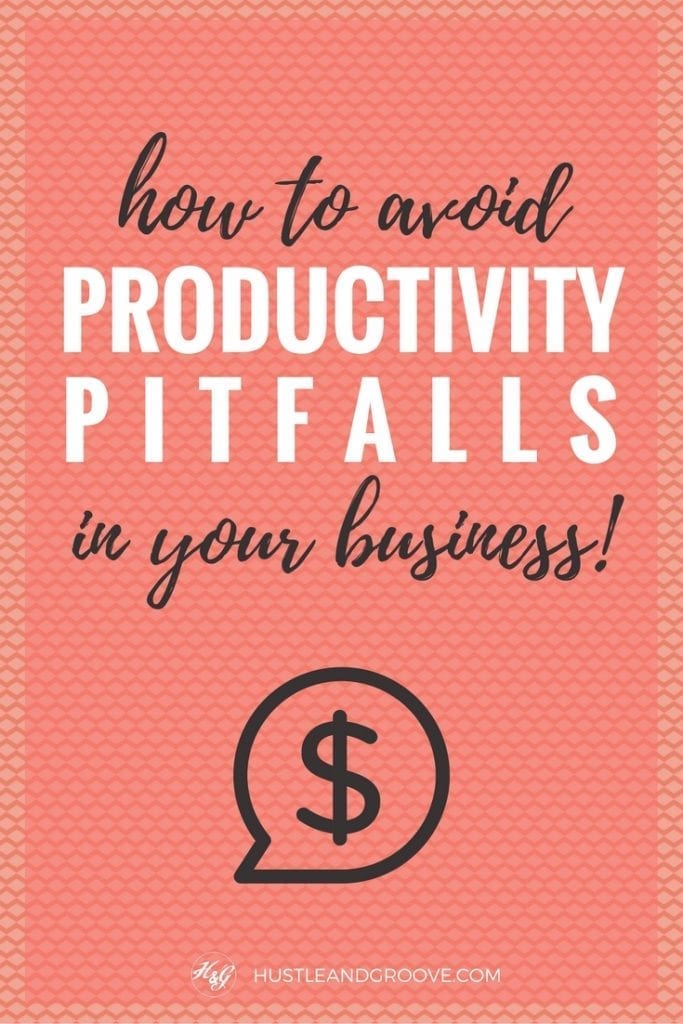When it comes to productivity pitfalls, they often occur from the way we measure productivity.
How do you measure productivity? If you’ve been measuring it purely in terms of profit, you might have an unhealthy workplace or work space.
We’re here to discuss three common productivity pitfalls, as well as alternative ways to measure your productivity levels.
With just a slight shift in your focus, you’ll see that it’s possible to have your cake and eat it too — that is, you’ll be able to keep your employees productive (if you have any), as well as yourself, so that you're satisfied and engaged without stumbling into some of the problems shared by small and large businesses alike.
How to Avoid These Three Productivity Pitfalls
#1: You’re Focusing on the Wrong Benchmarks
Many folks in the online business community tend to measure productivity only in terms of numbers and figures.
It’s certainly true that financial success requires an understanding of and commitment to the bottom line, but putting profit before certain other considerations is like putting the cart before the proverbial horse.
Take, for example, any company or retailer that tasks its cashiers with upsells or new membership quotas, or otherwise saddles them with numbers to meet or beat.
At first glance, holding your cashiers to a high standard when it comes to selling additional merchandise probably feels like a productivity booster, but reality says you might actually be hurting yourself and your employees.
Now, imagine instead that the focus is placed not on cold, hard numbers and quotas but instead on making sure each customer and visitor has a pleasant time.
To begin with, you and your employees will feel more like human beings and less like sales figures in somebody’s ledger, but it also stands to reason that the customer will be able to see the difference clearly — between a pushy employee who is sales-driven and one that’s focused instead on the customer experience.
In that kind of dilemma, it’s probably not unreasonable to expect productivity to, at least to a degree, take care of itself in the latter example.
The takeaway here is to treat your online business like an experience, rather than purely as a money-generating machine.
If your employees and customers feel like valued human beings, employees are more motivated to work harder and more productively, and customers are more likely to stick around or visit again in the future.
#2: Your Schedule Undermines Morale
We’re starting to hear more and more about how human beings, in general, seem to work better, faster and more efficiently when they’re given a chance to distance themselves from their work and reboot for a while.
According to a 2011 study out of the University of Illinois at Urbana-Champaign, brief diversions can “vastly” improve an employee’s focus on tasks that require their attention over prolonged periods of time. The same goes for you as the business owner.
In addition to the obvious threat of mental and existential exhaustion, remaining sitting or otherwise stationary for extended periods of time can result in complications such as:
- Obesity
- High blood pressure
- High blood sugar
- Abnormal cholesterol levels
- Metabolic syndrome
- Higher risk of cardiovascular disease and certain cancers
Yes — it might sound severely counterintuitive to encourage break-taking while pursuing better productivity at your business, but a second thought should be enough to convince you.
Exhausted people are not productive people. Physically taxing jobs are enough of a struggle to do well without appropriate rests in between tasks, but even cognitively stressful jobs can benefit from downtime.
We’ve already covered the idea that productivity shouldn’t be measured solely in terms of numbers, figures, and profits.
It also shouldn’t be measured in terms of “hours without sleep” or “hours spent on one’s feet.” There’s a reason why unions helped deliver the eight-hour workday and the five-day workweek:
It’s because we’ve known for some time that productivity suffers when morale suffers. And nothing brings morale down more quickly than mental and physical exhaustion.
#3: Your “Hustle” Sacrifices Safety
While it’s true that simply commuting to work in a car is itself a safety risk, there’s no reason to put yourself or others in harm’s way needlessly in the modern workplace.
Some of you reading this have probably worked in difficult environments before, such as bustling warehouses or areas where heavy machinery is in use.
The ways to get hurt — or worse — in these types of surroundings are almost too numerous to consider. Balancing safety with productivity can feel like an impossible task, but getting the balance wrong can be a significant productivity pitfall.
Chances are good you don’t make a point of instructing your employees to cut corners or conduct unsafe practices in the name of productivity, but that doesn’t mean it isn’t happening.
Maybe they’re not buddying up to steady each other’s ladders on the job, or maybe they’re playing fast and loose with operation requirements for machinery in efforts to get the job done more quickly.
You should also check to make sure you're not cutting corners too. We all need checks and balances in place to keep us on track.
Let’s make it simple: Productivity is important, but it can’t come at the expense of safety.
Take a moment to consider the way your workflows are set up or re-evaluate your rate quotas or the other ways you measure productivity “on the floor” of your business.
Then, pay attention to how many employees are actually “making the cut” when it comes to productivity, and to what extent this seems to impact the general atmosphere of safety.
If you put your mind to it, there’s no reason you can’t come up with any number of ways to encourage productivity and safety.
Rather than incentivizing just the top-performers, consider ways to incentivize behaviors that draw the best fit between safety and productivity.
Some Ideas:
Gift cards? Employee-of-the-month parking spaces? The choice is yours, but the message should always be the same: You adore employees who value safety as much as they value speed.
The Takeaway
If there’s a single takeaway here, it’s this:
There’s more than one way to measure productivity. You can measure it with how well you balance speed and safety, with how satisfied your customers are and how healthy and energized your employees (or yourself) are.
By re-evaluating what productivity means to you and your business, you stand a chance of dramatically improving working conditions and bolstering company morale.
Motivating your co-workers in novel and responsible ways can help boost company-wide morale to heights you’ve not seen. Why? It’s simple: When more people are hustling safely and contentedly toward a shared goal, the enthusiasm can be truly infectious.
[feature_box_creator style=”1″ width=”700″ top_margin=”5″ bottom_margin=”5″ top_padding=”5″ right_padding=”” bottom_padding=”5″ left_padding=”” alignment=”center” bg_color=”#75d7e1″ bg_color_end=”#0eb9cb” border_color=”” border_weight=”” border_radius=”” border_style=”” font_size=”14″ font_font=”Montserrat” font_shadow=”none”]
H&G Featured Writer: Lexie Lu is a designer and blogger. She contributes to the design world and always has a cup of coffee in close proximity. She writes weekly on Design Roast and can be followed on Twitter @lexieludesigner.
[/feature_box_creator]
